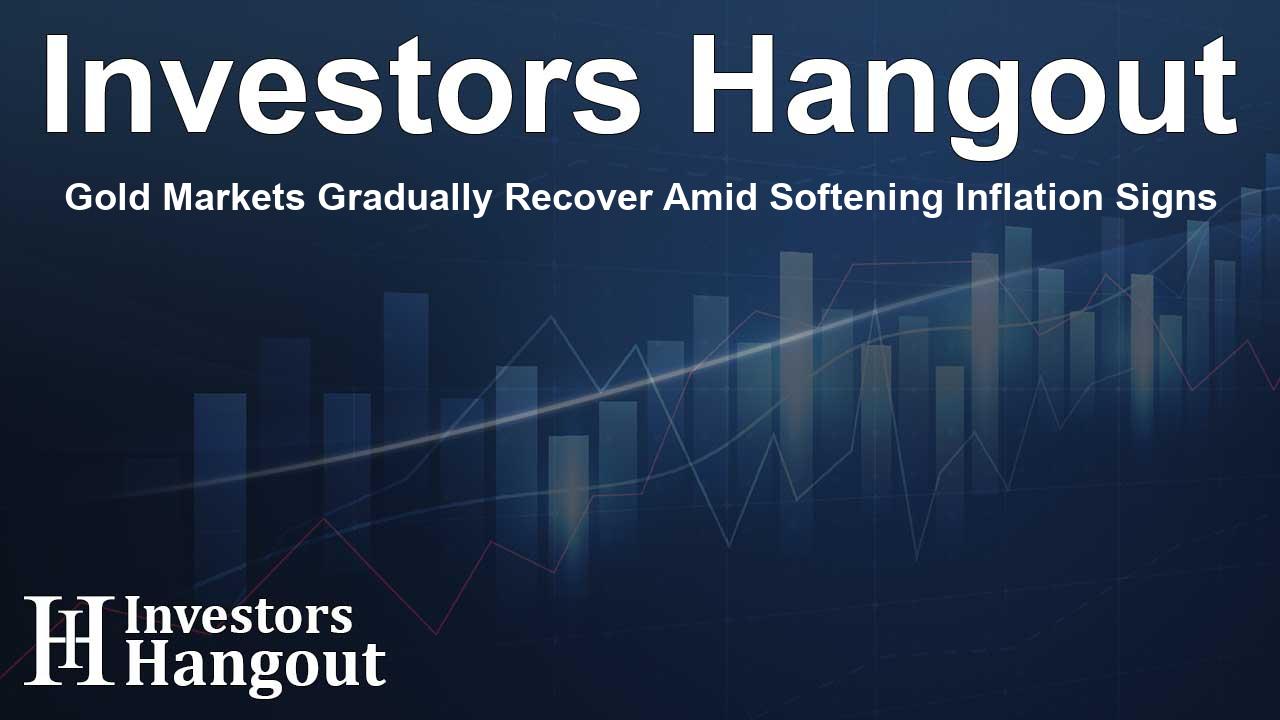Gold Markets Gradually Recover Amid Softening Inflation Signs

Gold Prices Show Signs of Recovery
In recent trading sessions, gold prices have begun to recover, marking a notable turnaround after experiencing significant downturns in the preceding week. A slightly softer inflation report from the U.S. has provided a much-needed boost, although market sentiments remain cautious in light of the Federal Reserve's recent hawkish signals.
As of the latest reports, spot gold is trading at $2,626.65 per ounce, reflecting a 0.2% increase. Meanwhile, gold futures for February delivery have seen a slight decrease of 0.1%, currently standing at $2,642.32 per ounce. The fluctuations in the gold market indicate a volatile yet responsive trading environment influenced by macroeconomic indicators.
Market Reactions to Fed Policies
Gold prices experienced pressure following a one-month low recorded earlier in the week. The anxieties surrounding the Fed's projection of fewer interest rate cuts in 2025 have reshaped market expectations, prompting a reassessment of gold's appeal. Current forecasts suggest the first rate cut could arrive around June, with just two reductions anticipated over the next year, according to predictive tools used by market specialists.
Rising interest rates tend to exert downward pressure on gold, primarily as they increase the opportunity cost associated with non-yielding assets like gold itself. In light of this dynamic, investors are traditionally drawn toward interest-bearing instruments such as bonds.
As the dust settles from the latest economic reports, the personal consumption expenditures (PCE) price index—a favorite gauge of inflation for the Fed—reported a modest increase of 0.1%. This figure, although below the anticipated 0.2% rise from the previous month, brings the annual PCE inflation to 2.4%, marginally lower than the expected 2.5%.
It's crucial to note that core inflation, which discounts the volatility of food and energy prices, remains steady at 2.8%, surpassing the central bank's ideal target of 2%. This persistent inflation presents challenges for monetary policy and market stability.
Impact of the Strong U.S. Dollar
The hawkish stance of the Fed has bolstered the U.S. dollar, further complicating the market landscape for gold. A stronger dollar, buoyed by higher interest rates, often translates into lower gold prices, rendering the precious metal more expensive for international buyers utilizing other currencies.
Recent trading sessions saw the U.S. Dollar Index inch up by 0.1%, maintaining a position close to its two-year high last recorded on Friday. This indicates a robust dollar presence, which continually weighs on gold's pricing dynamics.
Other Precious Metals Trending Higher
On a brighter note, other precious metals have experienced upward trends, buoyed by the same easing inflationary pressures. For instance, platinum futures rose by 0.8% to $940.15 per ounce, while silver futures gained 0.6%, reaching $30.137 per ounce. These increases signify a broader positive sentiment across the precious metals spectrum.
Copper Market Awaits Stimulus Measures
Shifting focus to industrial metals, copper prices are also on the rise, largely attributed to the softer inflation data. Following a decline of over 1% in the previous week, the red metal has rebounded slightly, with copper futures on the London Metal Exchange climbing to $8,978.50 per ton, reflecting a 0.3% increase. One-month copper futures have similarly ascended by 0.6%, currently valued at $4.1227 per pound.
As traders navigate these fluctuations, there's increasing anticipation surrounding potential stimulus measures from China. Speculation indicates Beijing may ramp up fiscal initiatives in response to economic pressures, with the nation being a formidable player in the copper market as its largest importer.
Frequently Asked Questions
What is causing the recent increase in gold prices?
The increase is primarily due to softer inflation data from the U.S., which has provided some relief to the gold market despite ongoing caution regarding the Fed's interest rate policies.
How do interest rates affect gold prices?
Higher interest rates elevate the opportunity cost of holding gold since gold does not yield interest, which can decrease its attractiveness compared to interest-bearing investments.
What is the PCE price index?
The PCE price index is an inflation measurement favored by the Federal Reserve that tracks changes in the price of goods and services consumed by individuals.
Why is the U.S. Dollar Index important for gold traders?
A stronger U.S. Dollar Index can lead to lower gold prices, as gold becomes more expensive for buyers using other currencies, thus influencing demand and trading patterns.
What trends are emerging in the copper market?
Copper prices have recently increased following weaker inflation reports in the U.S., and there is anticipation of new stimulus measures from China, which could further impact copper demand.
About Investors Hangout
Investors Hangout is a leading online stock forum for financial discussion and learning, offering a wide range of free tools and resources. It draws in traders of all levels, who exchange market knowledge, investigate trading tactics, and keep an eye on industry developments in real time. Featuring financial articles, stock message boards, quotes, charts, company profiles, and live news updates. Through cooperative learning and a wealth of informational resources, it helps users from novices creating their first portfolios to experts honing their techniques. Join Investors Hangout today: https://investorshangout.com/
Disclaimer: The content of this article is solely for general informational purposes only; it does not represent legal, financial, or investment advice. Investors Hangout does not offer financial advice; the author is not a licensed financial advisor. Consult a qualified advisor before making any financial or investment decisions based on this article. The author's interpretation of publicly available data shapes the opinions presented here; as a result, they should not be taken as advice to purchase, sell, or hold any securities mentioned or any other investments. The author does not guarantee the accuracy, completeness, or timeliness of any material, providing it "as is." Information and market conditions may change; past performance is not indicative of future outcomes. If any of the material offered here is inaccurate, please contact us for corrections.